How To Do SciComm Right - 4 Strategies To Use When Communicating to Non-Scientists
There is a deep interest and fascination with science amongst most people, whether they have extensive scientific training or not. That’s why we want to be able to convey the most important parts of our research to a broader audience, since communicating scientific concepts to non-scientists helps to create a better understanding and appreciation of science at a grander scale.
But knowing the best ways to communicate science can be confusing. There are many ways to approach science communication, and it is a worthwhile challenge: It can truly be a marvel to generate flashes of insight and “aha moments” for someone who comes to realize the significance of your research.
Below, we’ve compiled a list of key strategies to ensure your science communication (SciComm) is as clear, engaging and accessible as possible to the general public:
1. Tell a Story
Every science project has an inspiration behind it or a fascinating process.
Telling that story behind the science can capture attention and help you connect with your audience. Share the journey of your research, the challenges faced, and the breakthroughs achieved. Stories make science relatable and memorable.
Humans naturally connect with stories because they evoke emotions and provide context.
Share Your Why
When communicating your research, start with the motivation behind the project. Was it a personal experience, a pressing societal issue, a natural curiosity, or all of the above? By sharing these origins, you make your work more relatable and understandable. When someone gets the ‘why’ behind the work, they are more readily able to connect to the information that’s communicated to them.
Show Your Work
Once you’ve set the stage, walk your audience through the process. Highlight the significant moments in your research journey, such as unexpected discoveries, moments of doubt, and triumphant breakthroughs. This narrative approach not only keeps your audience engaged but also helps them understand the complexity and effort involved in scientific research.
You can use this narrative approach to tie your story back to the bigger picture. Explain how your findings contribute to the broader understanding of the topic and why it matters.
A compelling narrative that links personal motivation, research process, and broader impact will resonate deeply with non-scientists and make your SciComm more effective.
2. Avoid a Numbers Soup
It’s tempting to share all your findings, but non-scientists often find complicated graphs or statistics difficult to interpret. Unless someone is a number’s whiz, your data will miss the mark on creating any meaningful insight for them.
Focus on the one or two numbers that best convey the urgency or significance of your work. Simplifying data helps your audience grasp the core message without feeling overwhelmed.
To communicate effectively, prioritize the most important data points.
Ask yourself: What are the most crucial takeaways from my research?
These key numbers or findings should be highlighted in your communication. Simplifying your message to focus on these essential figures makes it easier for your audience to understand and remember.
Show, Don’t Tell
Use visual aids to help explain key numbers. Instead of presenting a complex graph with multiple data types and axes, create a simple, clear infographic that highlights the most important statistics. Visuals can be powerful tools in making data more accessible and engaging, especially for those not familiar with scientific analysis.
Additionally, provide context for the numbers you present. Explain what they mean and why they are significant in layman’s terms.
For instance, instead of saying,
“Our model predicts a 2.5% increase in X.”
You could say, “This finding suggests a significant increase that could impact Y in a meaningful way.”
By contextualizing your data, you help your audience understand its relevance and importance.
3. Keep Jargon to a Minimum
Although advanced vocabulary can make it easier for scientists to succinctly communicate complex concepts, scientific jargon can be a major barrier to understanding for non-scientists.
If you must use technical terms, ensure you define them clearly. Aim to explain concepts as you would to an 8-year-old. Start by identifying the technical terms and phrases in your explanation. Think about how you can replace these with simpler, more commonly understood words. If a term is unavoidable, take the time to explain it in plain language.
This approach makes your communication clearer and more engaging. You can also avoid alienating your audience.
Using analogies and metaphors can be particularly helpful in this regard. For example, if you’re explaining a complex chemical reaction, you might compare it to a recipe in cooking, where different ingredients combine to create a final dish. This approach makes abstract concepts more tangible and easier to grasp.
Demonstrating the meaning of terminology with the use of visual aids is another way to incorporate different forms of communication to simplify it. For example, our team at Impact Media Lab worked with Georgia Tech’s Separation Sciences Center to create a series of short animations that almost instantly explain the meaning behind the terminology of the reactions involved in separations.
Finally, practice your explanations with a non-scientific audience. Friends, family members, or colleagues from different fields can provide valuable feedback on whether your communication is clear and understandable. Their questions and confusion can help you identify areas where further simplification is needed.
4. Be Patient
Science is inherently complex, and it’s natural for non-scientists to struggle with understanding. Practice is key to improving your SciComm skills. Test your explanations and storytelling with friends and family. Their feedback can help you refine your approach and make your SciComm more effective.
Effective communication is a skill that improves with practice. Start by explaining your research to people who are completely unfamiliar with the topic. Pay attention to their reactions and the questions they ask. This feedback is invaluable in helping you refine your explanations and make them more accessible.
Be prepared to explain your concepts multiple times and in different ways. Like a comedian practicing their bits, takes notes on what works and doesn’t work. What makes sense to one person might be confusing to another. Experiment with various approaches and find out what works best for different audiences.
Flexibility and adaptability are key components of successful and effective SciComm.
Additionally, embrace the iterative nature of communication. Each time you explain your research, you have the opportunity to improve your clarity and effectiveness. Work different analogies or metaphors into your explanations.
Don’t be discouraged by initial confusion or misunderstandings. View them as opportunities to learn and grow as a science communicator.
Try to apply these principles to your research
Communicating science to non-scientists requires thoughtful storytelling, simplification of data, minimal use of jargon, and patience.
By using these strategies, you can make your scientific work more accessible and engaging, helping to bridge the gap between the scientific community and the public.
Effective SciComm not only educates but also inspires curiosity and appreciation for the scientific endeavor. With practice and persistence, you can become a more effective science communicator and share the wonders of your research with a broader audience.
About the author
Impact Media Lab is a small-but-mighty creative team specializing in science brands, media, and strategy. We believe science can lead to seismic shifts in how we understand the world, but it takes great communication to make it happen.








